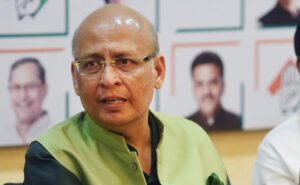18 And Ticking: The Booming IPL Business


A demure bride keeps her veil on the whole day, despite coaxing from in-laws. She won’t budge, not even for her new husband. Enter Rohit Sharma, and the veil is gone, revealing a star-struck, wide-eyed face.
Elsewhere, Virat Kohli sees the number 18 all around him at a cafe and is baffled. Then viewers learn it’s the 18th season of the Indian Premier League (IPL) and Bengaluru (Kohli’s IPL team) has its sights set on the title this year.
Advertisement – Scroll to continue
From ‘manoranjan ka baap’ (big daddy of entertainment) in 2008 to ‘sabka level up hoga’ (everyone will up their game), IPL is raking in the moolah and grabbing eyeballs all the way. In its opening weekend (March 22-23, 2025), IPL viewership showed a whopping 40% year-on-year growth with 137 crore views, according to Jio Hotstar, which holds the exclusive domestic digital broadcasting rights for the League until the end of the 2023-2027 cycle. Peak concurrent views were at 3.4 crore. For perspective, that is Delhi’s population.
IPL’s phenomenal growth shows in some dizzying numbers. BARC (Broadcast Audience Research Council, India) data shows for three years – 2016, 2017 and 2018 – viewership of General Entertainment Channels fell by 1-3 per cent during IPL weeks. For news channels, viewership fell by 2 per cent in 2017 compared to the previous year.
“IPL telecast has shown significant impact on viewing habits for other genres,” according to BARC’s 2018 newsletter. “The share of GEC genre declined marginally in all three years (2016, 2017 and 2018), as viewers tuned into IPL matches during prime time when general entertainment content otherwise ruled the roost,” it said.
Cricketainment. How did it come to this? A cricket-crazy nation, a galaxy of sponsors and a marketing blitzkrieg – a potent combination that has kept the IPL soaring for 18 seasons.
Back in 2008, T20 was not even considered serious cricket. Though India had won the T20 World Cup in 2007, the traditional formats (ODI and Test) still scored with the audience. But much has changed since—the three editions of the Asian Games (2010, 2014, 2022), which had the T20 as an integral component; its re-introduction in the Commonwealth Games in 2022 after 24 years; and finally, the return of cricket in the Olympics in Los Angeles in 2028 after 128 years, probably in its T20 avatar.
T20 franchises are now more serious in year-long functions than just setting shop for two months of IPL. Among the 10 IPL teams, eight either have stakes or own teams in foreign franchise leagues in the UAE, South Africa, West Indies, England and the USA. The IPL, however, remains the crown jewel. A stake in an IPL team is a big business opportunity.
Prime Property
The Board for Control for Cricket in India (BCCI) generated revenues of Rs 20,686 crore last year. The BCCI is the world’s richest cricket board. Though T20 franchise leagues are mushrooming around the world, no active Indian player is allowed in foreign leagues.
It’s not restricted to domestic players. The fat paycheques ensure the availability of the best of foreign talent for two months on Indian soil.
The world’s cricketing best have congregated once again for the prime-time audience.
IPL has been a crowd-puller ever since its launch. In fact, according to BARC data, 35 crore viewers watched the live broadcast of the first 10 IPL matches on television in 2024, higher than any previous edition of the league, including seasons played during the pandemic.
IPL’s annual broadcast revenues are on par with top global sporting leagues
The real game-changer of IPL has been the streaming platforms. While Star had the telecast rights for IPL on its Hotstar app from 2015, the story took an altogether new turn when Viacom18 (its streaming platform was called Jio Cinema then) acquired the digital rights for the 2023-2027 cycle for Rs 23,758 crore. It was the first time that digital rights were sold at a higher price than TV rights, won by Disney Star for Rs 23,575 crore.
Jio Cinema’s decision to broadcast IPL for free in 2023 and 2024 was the booster shot that digital viewership needed. The digital viewership of IPL 2024 was reportedly 620 million (Jio Cinema) and the TV viewership was 546 million (Star Sports TV). So hooked are viewers that after the merger of Jio Cinema and Hotstar, IPL being put behind a paywall was hardly a dampener for India.
Prioritising Matches
To maximise viewership, broadcasters have chalked out a strategy where preference is given to matches involving the Big Four- Chennai Super Kings, Mumbai Indians, Royal Challengers Bengaluru and Kolkata Knight Riders-during promotions. Collectively, these four sides boast of a bigger fanbase than the rest of the six IPL teams put together.
In fact, the first three matches, which had a viewership of 137 crore, included the two marquee games of KKR vs RCB and MI vs CSK. The pattern follows the European football leagues, where an El Clasico in La Liga or a Manchester United match in Premier League grabs more eyeballs, regardless of the level of the play.
For a tournament that runs for over two months, with matches stacked up non-stop, fatigue can set in among viewers. Matches of the big four are scheduled so as to tackle that weariness. With an eye on weekends, weekdays have one match each, while Saturdays and Sundays see two matches per day for most of the IPL season.
As the IPL enters ‘adulthood’ this year, all involved will hope for a growth spurt.







